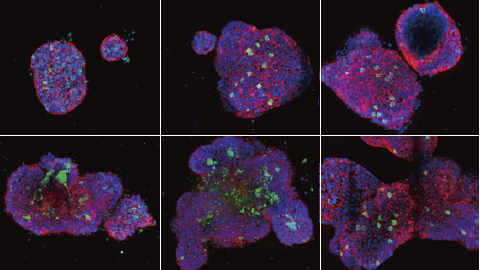In this webinar, our experts discuss how to obtain the best statistical data for spheroids and microplate-based assays. These data can help you quantify the response of a 3D model to a compound and makes it easier to compare the effect of different treatments, such as varying concentrations.
FAQWebinar FAQs | 3D AnalysisCan NoviSight™ software be used on images obtained with other microscope brands?Yes, it can. While NoviSight 3D cell analysis software is tailored to Olympus image files, we provide a TIFF image converter for flexibility. As long as your images are in an open format, then you can import them into the software and run the analysis. Can NovSight software analyze 2D images?Yes, it can. This capability is useful for broader and more standard applications. Can widefield microscopes do 3D imaging?It depends on the sample thickness and required outcome of your experiment. If your sample is thicker than 2–30 μm (i.e., more than 2–3 cell layers) and you want to measure single-cell level information, 3D imaging with widefield microscopy is not recommended as it is hard to visualize the depth due to light scattering. In contrast, if your sample is less than 2-30 μm or you just want a rough estimation of the size of tissue fragments or clustered cells, such as the volume of whole organoids, it might work depending on your sample specification. Still, we would recommend applying image processing like 3D deconvolution to enhance the contrast. Please keep in mind this is still less accurate than measurement on confocal microscopes, so it is only an intermediate solution. Can 3D applications be used in fields other than drug discovery?Yes, definitely. We have seen a strong increase in academic research moving toward 3D data applications. For example, organoids have been studied and used in the regenerative medicine and bioengineering fields. What microscope is best for 3D live imaging?A two-photon microscope (also called a multiphoton microscope) is the best fit to observe a 3D live-cell sample such as a spheroid or organoid. Generally, a two-photon microscope is gentler on cells and can observe at depth within a 3D spheroid. Does NoviSight analysis software incorporate machine learning?The current algorithms are tailor-made for organoids and spheroids but are also flexible enough to extend to tissues. Machine learning and deep learning might make sense in the future, but for now, voxel analysis works extremely well with the traditional algorithm approach. |

.jpg?rev=8603)


